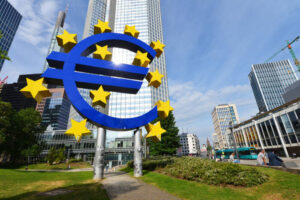Trade Risks and the Growth Outlook: What Investors Need to Know
Trade Tensions: A Looming Challenge for Growth
As we delve into the current market dynamics, one aspect that consistently pressures the growth outlook is the rising trade tensions with the U.S. Recently, a proposed 20% tariff on EU imports was put on hold for a 90-day window. However, the situation remains precarious with a 10% blanket tariff on non-Chinese imports currently in place, impacting approximately €380 billion worth of European goods.
This uncertainty has already begun to ripple through market sentiment. Notably, Germany’s ZEW index has plummeted to a two-year low, and eurozone-wide sentiment is now reflective of levels seen back in late 2022. For investors, this presents a cautionary tale: trade risks not only create hurdles for growth but also can lead to volatility in financial markets.
At Extreme Investor Network, we believe that understanding these macroeconomic factors is essential for creating a robust investment strategy. If European Central Bank (ECB) President Christine Lagarde highlights trade risks as a primary concern—and uses them to justify potential monetary easing—markets may react by favoring a more aggressive interest rate trajectory. Conversely, should Lagarde downplay these risks and emphasize ongoing negotiations, the euro might find stronger footing against currencies like the U.S. dollar.
The Market’s Shift Towards Easing: What to Expect
The outlook for interest rates has shifted considerably, with market expectations leaning towards a quicker pace of cuts from the ECB. Recent trading patterns indicate that traders are now pricing in nearly two rate cuts across the next two ECB meetings, with forecasts suggesting up to four cuts by the end of the year. Indeed, Euribor futures are discounting an astonishing 86 basis points of easing by early 2026.
Experts are weighing in on the implications. Frederik Ducrozet from Pictet has pointed out that the ECB might need to adopt a strategy of cutting rates at every meeting due to the pervasive uncertainty. Meanwhile, ABN Amro has predicted that the deposit rate could drop to 1.5% by September.
As members of the Extreme Investor Network, it’s crucial to monitor how the ECB’s actions align with current market expectations. Any divergence from the U.S. Federal Reserve’s rate path—whether the ECB adopts a more aggressive stance or opts for caution—will significantly affect rate differentials and the attractiveness of the euro to investors.
The Importance of Forward Guidance in Shaping EUR/USD Response
With rate cuts on the horizon, investors are intensely focused on the ECB’s forthcoming communications. The tone that Lagarde adopts will be pivotal. A dovish tone that accentuates trade and growth risks could escalate expectations for further easing, which may lead to downward pressure on the euro. Conversely, a more balanced or cautious approach could help stabilize the currency.
At Extreme Investor Network, we understand the necessity of not just the rate movements, but the context surrounding those decisions. The ECB’s communication strategy will likely dictate the next significant movements for EUR/USD, making it essential for traders and investors to listen closely to not just the numbers but the narrative provided by central bank leaders.
For ongoing updates and a deeper dive into market analysis, visitors are encouraged to check our Economic Calendar. Stay informed and ahead of the curve with insights tailored to enhance your investment journey.
In conclusion, while rising trade tensions pose considerable risks, the evolving landscape of ECB policy offers potential opportunities for investors guided by informed predictions and a keen understanding of global economic dynamics. Join us at Extreme Investor Network as we explore these developments and help you navigate the complexities of investing in today’s market environment.

